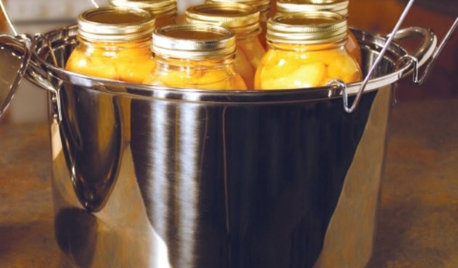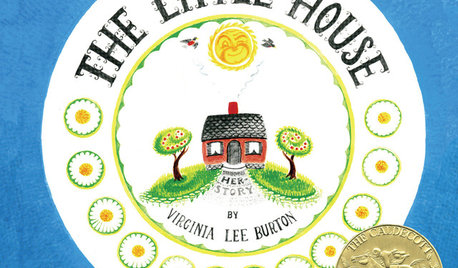Safe Canning Books
seaglassgirl
14 years ago
Related Stories

PRODUCT PICKSGuest Picks: Canning, Preserving, Steaming, Dehydrating
20 products to help make fall produce last through the season and beyond
Full Story
FEEL-GOOD HOMEDesigning for Pleasure: A Safe and Sound Perch
Canopy beds, low ceilings, high-back sofas: When it comes to comfort at home, we have something in common with our ancient ancestors
Full Story
GARDENING AND LANDSCAPINGPlan for Summer: Protect Your Family With a Safe Pool
Fencing, presence detectors and non-slip materials help keep your pool area accident-free
Full Story
LIFE10 Ways to Keep Your Home Safe While You're Traveling
Set off on your trip with peace of mind, knowing you've taken the right steps toward keeping your home secure
Full Story
DECORATING GUIDES8 Tips for Creating a Safe and Cozy Nursery
Learn how to design a room that will grow up with your baby and also will be comfortable for you
Full Story
BOOKS11 Great Children’s Books About Home (and 2 Honorable Mentions)
Homes come in many different shapes and sizes, and these kids’ books highlight the tallest, the smallest, the oldest and the silliest
Full Story
COMMUNITYBook It: Bring a Mini Library to Your Front Yard
Take a book, leave a book. An ingenious lending-library idea is sweeping the nation — see if it's right for your neighborhood
Full Story
FEEL-GOOD HOME15 Cozy Book Nooks and What They Want You to Read
Put the beach reads away; these comfy spaces are creating a fall reading list. What books do they suggest to you?
Full Story
BOOKSBooks: Tom Kundig's Houses 2
Expansive new release captures Seattle architect's beautiful, highly-crafted, often kinetic home designs
Full Story
DECORATING GUIDESNovel Ways With Bedroom Books
Reading and relaxing go hand in hand. See how designers are incorporating mini and all-out libraries in the bedroom
Full Story





Linda_Lou
digdirt2
Related Professionals
West Milford Landscape Architects & Landscape Designers · Citrus Heights Landscape Architects & Landscape Designers · East Rancho Dominguez Landscape Architects & Landscape Designers · Berwyn Landscape Contractors · Cedar Hill Landscape Contractors · Desert Hot Springs Landscape Contractors · Edwardsville Landscape Contractors · Norwalk Landscape Contractors · Ponte Vedra Beach Landscape Contractors · Seminole Landscape Contractors · West Allis Landscape Contractors · Antioch Landscape Contractors · Eastlake Landscape Contractors · Boston Roofing & Gutters · Hillcrest Heights Roofing & Guttersdgkritch
readinglady
ccaggiano
digdirt2
ccaggiano
digdirt2
readinglady
ccaggiano
digdirt2
ccaggiano
Linda_Lou
annie1992
temiha
digdirt2
temiha
conate
digdirt2
conate
skeip
seaglassgirlOriginal Author
annie1992
pyxiwulf
digdirt2
mellyofthesouth
pqtex
digdirt2
booberry85
2ajsmama
gram999
digdirt2
oukay
gram999
harvestingfilth
digdirt2
2ajsmama